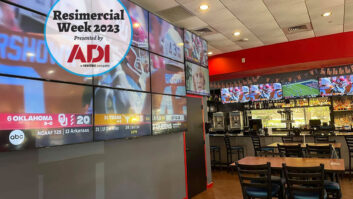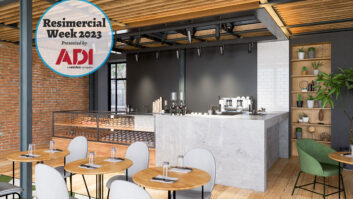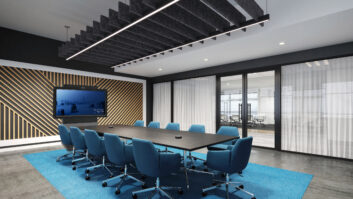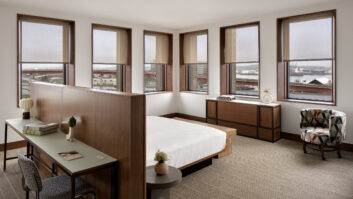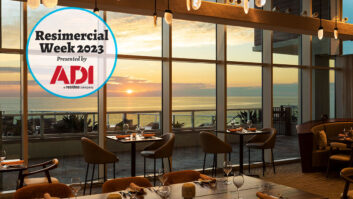The boundaries between work and home continue to blur. Blink and you might miss the transition entirely. Smartphones and 5G are making digital connectivity more seamless. Wi-Fi is like the air we breathe. Co-working hubs feel more like living rooms with thoughtfully cozy interior design.
The same cultural and technological shifts that have reshaped “the workplace” are also nudging the AV market in interesting new directions. More AV experts are leveraging residential skills and vendor relationships to expand their commercial AV services. Some argue that the advancement of IP-based AV devices and lower barriers to entry are recasting “resimercial” — the portmanteau indicating a mixture of residential and light commercial services — as an emerging market category that stands on its own.
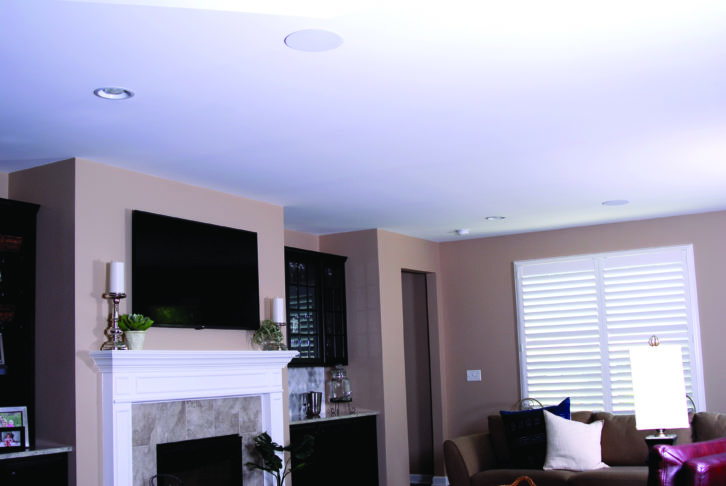
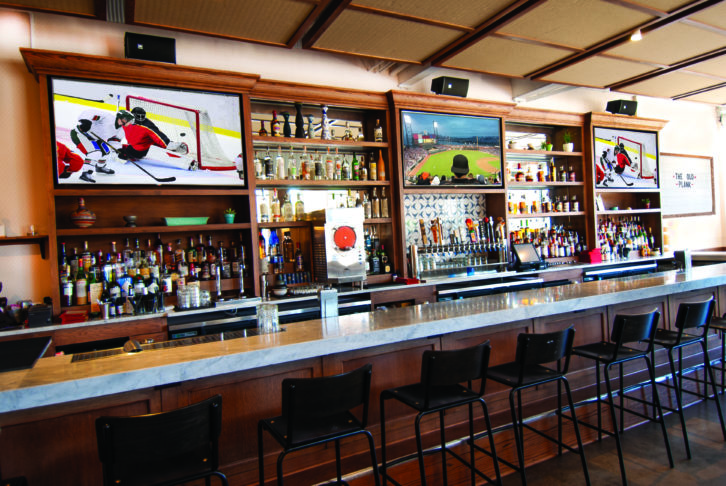
Resimercial Redefined
Mixing commercial projects within a primarily residential AV purview is smart. It makes for a full-service portfolio, an especially important consideration as the housing market fluctuates. But in the low-voltage community, resimercial is not a new phenomenon. According to Walt Zerbe, senior director of Technology & Standards at CEDIA, light commercial work has long been a revenue stream for CEDIA members. Of the 3600 CEDIA member organizations, a resimercial snapshot would reveal a general 70/30 split (residential to commercial). This figure is fairly steady, though the metrics shift in correlation with housing and construction trends.
Thanks to a decade of IP advancements and a slow march toward software-driven systems, a next-gen resimercial moment has arrived. Manufacturers like Crestron, Harman, Control4, Samsung, Vanco, and URC — just a few from an extensive list — support residential and pro markets. Beyond that, many similar audio, video, and control technologies are being deployed in both commercial and residential settings. Years ago, this type of cross-applicability “really wasn’t possible,” says Mark Corbin, president of Vanco International. “A lot of the equipment that our dealers are using in residential systems are also being used in a lighter commercial system. The confidence level has gone up dramatically.” The technology itself is more robust and flexible, helping residential dealers maximize resimercial opportunities.
Related: Are You Ready for “Resimercial”?
Resimercial Means Atmosphere
The fog is clearing around the nature of resimercial itself. The term “commercial” indicates a 200-room university building or a skyscraper. But, as the appetite for good audio and video grows and price points lower, opportunities are increasing for light commercial applications. Nuanced audio and dynamic digital signage are everywhere now, from a restaurant menu board to a yoga clothing purveyor. “Small commercial sometimes gets forgotten and, for a while, it really wasn’t even in its own category,” says Corbin. “The thought was almost an afterthought: ‘We’ll just put up some background noises.’ Now [the smaller locations] are a major focus. Lighting is a focus. The audio has to be great. Video is essential.”
In smaller venues, from retailers to cafes, owners are foregrounding atmosphere. If a new bar doesn’t offer a compelling guest experience, consumers might keep walking. In the one-click mobile buying era, when consumers are actually out in the physical world, aesthetics matter more than ever.
IP Is the Glue
Many resi and pro AV integrators are diving headfirst into IP education, and with good reason. As systems grow in functionality, it is important to understand how IP-based AV systems differ, and which systems can do video logs, for example. Which systems offer on-time display and tiling?
HDMI over IP is a good example of how integrators are becoming more comfortable with network-related systems. Corbin explains: “We’re releasing an HDMI over IP unit called the EVO-IP IZ, that achieves basic switching, splitting, and matrix modes. You can mix this basic HDMI over IP system with our more advanced system all over the same network and within the same control platform.” This new unit is just one of the ways his company is evolving to support dealers as they pivot.
If you want to make resimercial more repeatable, go the IP route. “For the IP video units, as well as the audio units, everything is software-based where you don’t have to be on site to be able to troubleshoot systems anymore,” Corbin adds. “It gives you a lot more flexibility, even in a commercial setting. That now trickles in the residential setting. They’re meshing really well together.”
Also by Margot Douaihy: Need to Know: Blockchain
Target Resimercial Verticals
“Many pro and residential jobs have “similar types of demands now,” says Zerbe, but at varying scales. Common requests are programming, distribution, music, projection, control, connectivity, security, and cameras.
Z-Wave Alliance executive director, Mitchell Klein, agrees: “A meeting room, a corporate office, a corporate lobby — residential integrators are well-tuned into these [requirements] and can definitely pull those off.”
Catalyst AV, an alliance of 12 privately-owned distribution companies, recently confirmed a 15 percent growth rate among its members, citing resimercial as one of the business drivers.
Critical Differences: Codes, Compliance, Operations
Beyond technical needs, Zerbe identifies a major difference between residential and commercial projects in the forms of codes, compliance, and regulations. “Codes are different from commercial to residential,” he says. “Maybe it is a compliance issue or the ADA, which is very important in higher education. There is also the question of the jurisdiction of where you’re installing.”
Zerbe explains that CEDIA supports members by helping them understand that there may be codes in their jurisdictions they need to be aware of. CEDIA also collaborates with standards governing bodies and technology alliances such as the HDBaseT alliance, HDMI, Dolby, and CTA. “We [collaborate] with many organizations and associations,” he says. “This keeps us in the know of what’s going on and how to install technology in the best way possible.”
Operations is another area where you’ll see contrasting considerations. To put these differences into focus, in the residential market, you mostly work with the homeowner. On the commercial side, more often than not, there are operational and cultural nuances, like construction-related concerns and chains of management.
Klein sees a healthy mix of light commercial and residential interplay, but he did share some important insight. “The overlap is there,” he says, “but I would advise pros to be cautious. The overlap is sometimes not as complete as the resi-turned-commercial integrator might like it to be.”
Corporate communications is one example of a uniquely commercial challenge. Simply put, it’s one thing to do an audio system in a small bar, but when you’ve got a restaurant with multiple room and zones, timing and distribution issues will appear.
Related: Trends Impacting CE Industry Growth
The “It” Factor and Networking Education
You cannot stretch a residential system into a stadium, but if you understand networking from the residential standpoint, you may be able to apply it to smaller commercial applications. There is an undeniable shift toward using HDMI switches and category cables to send video signals long distances. The demand for interoperability, content protection, and data privacy is high; both home and commercial settings are increasingly centering an IoT-type of interconnectivity, making it more important than ever. Facial recognition technology, used in concert with new cameras, also applies to higher-end home and commercial projects. All of these products require a solid data backbone, including fiber, especially when you add heavy-lifting video feeds like 4K and 8K.
Zerbe notes: “Integrators are always looking to gain more knowledge on networking. Our networking classes are sold out year after year.”
“Collaborate and partner with the IT folks,” Klein suggests for AV specialists looking to do more in commercial environments. “IT gets the first call.”
Shift to Services and Cloud
In some product categories, hardware margins are shrinking. AV services — driven by IP and cloud solutions — might help round out an integrator’s offerings. IP systems like Vanco’s EVO-IP is cloud based. As Corbin explains: “With the cloud, you can do your monitoring, diagnostics, and system checks. You can set up these systems where they can alert you directly via a cell phone about a specific setup. There’s your reoccurring revenue.”
If a dealer can remotely reset a TV or a receiver that’s not accepting video because it needs to be rebooted, cloud access is an advantage. A cloud-based system could allow you to push an upgrade or perform a diagnostic test without having to plug in or roll a truck. The benefits extend to dealers servicing both markets; you could be between jobs and not have to have separate crews to address issues at two different job sites.
Building Community
Dealers who partner early with savvy small business owners may have another advantage. What might start as a five-screen spec for a bar could evolve into fully featured AV experience that expands as an organization grows or opens new locations. Think: networked displays and audio, lighting, and control. The key is to nurture the relationship and add value for stakeholders at every stage.
Klein believes in the power of community, and he sees the unique value in the diversity and collaboration within the ecosystem for resimercial. The Z-Wave Alliance consists of more than 700 companies with 3000 products that are all interoperable with each other. “For integrators, you can come to the Z-Wave CEDIA Expo booth, or you can join the alliance as an integrator member, and collaborate with 700 member companies,” he says. “You can start networking, finding solutions, and building relationships — not just with a manufacturer, but also with their distributors. The alliance has many other integrator members to share challenges and best practices. The opportunities are substantial on the operation side as well as on the networking side. Z-Wave isn’t about one specific product but rather more solutions focused,” says Klein, “which fits well within resimercial.”
Margot Douaihy, PhD, is Future’s Editor-at-Large of Education & AV.
Revolutionary Resimercial Products at CEDIA 2019
- D-Tools System Integrator: D-Tools System Integrator (SI) software caters to the unique and diverse needs of systems design and installation firms. SI helps manage key aspects of an integrator’s business — including sales, comprehensive system design, project documentation, and project management — to streamline business processes, leading to improved operational efficiencies and increased profitability.
- Digital Projection Satellite MLS: The Digital Projection Satellite Module Laser System is a RGB laser-illuminated prototype that separates the light source to a remote location, enabling a small, compact projection “head” that contains the optical and video processing with virtually silent operation. Digital Projection’s MLS offers the installer flexibility, particularly where space and access are limited.
- Leon Ente SoundTile: Leon’s Ente SoundTile may look like a piece of art at first glance, but behind its grille are two channels of reference-grade audio by Leon and power by the Sonos AMP. Chosen artwork is printed directly onto perforated metal that can be customized to suit any décor.
- Luxul Apex XAP-1610 Wireless AP: The Apex XAP-1610 AC3100 MU-MIMO dual-band wireless access point (AP) delivers data rates up to 3167 Mbps and supports up to 128 wireless devices. The 4×4 technology means it is capable of four spatial streams to communicate with either more devices at once or over more streams.
- PowerShades PoE Motor: PowerShades has debuted what it calls the “industry’s first line of Power Over Ethernet (PoE) automated window shades for both commercial and residential applications.” PoE is ideal for new construction where integrators are already installing Cat5. With no electrician license required for installation, PoE can save customers money, as well as offer reliable communication over RF without the expense of proprietary wiring.
- RTI Flagship T4x Handheld Remote Control: Designed for use in any contemporary environment, the T4x remote control’s sleek design offers superb ergonomics, a high-resolution 4-inch capacitive touchscreen, and fully programmable soft-touch buttons. Setting the standard for wireless control, the device is packed with features including grip sensors, Wi-Fi, dual RF, and more.
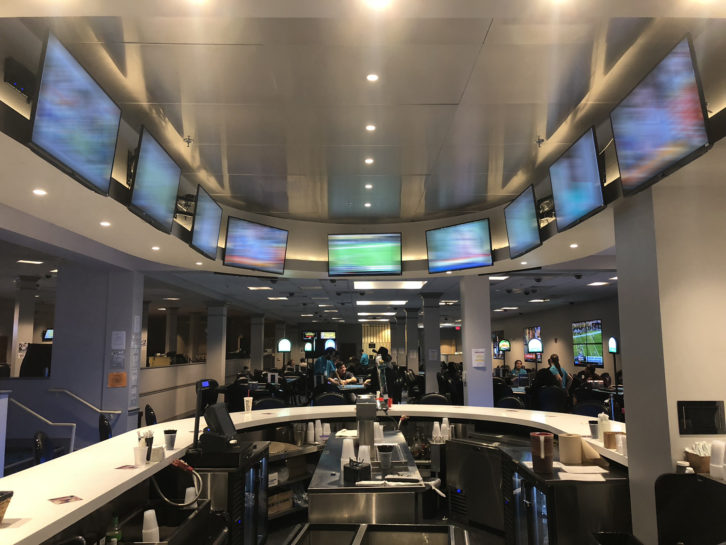
Resimercial Mastery at Casino Fort Pierce
Florida-based integrator Axis Satellite is renowned for its mix of low-voltage AV residential and commercial work. “Thirty-three percent of our business is DIRECTV-related,” says Danny Lucier, president of Axis Satellite. “Clients are usually looking for technology and programming, and we have become a turnkey, one-stop shop. We can pre-wire, do pre-construction, deliver the AV equipment, program it, and then service it after the sale.”
While residential and commercial technologies often overlap, service can vary in commercial applications if there are various users or administrators, whereas, in a residential job, there might be “one dedicated user to train.”
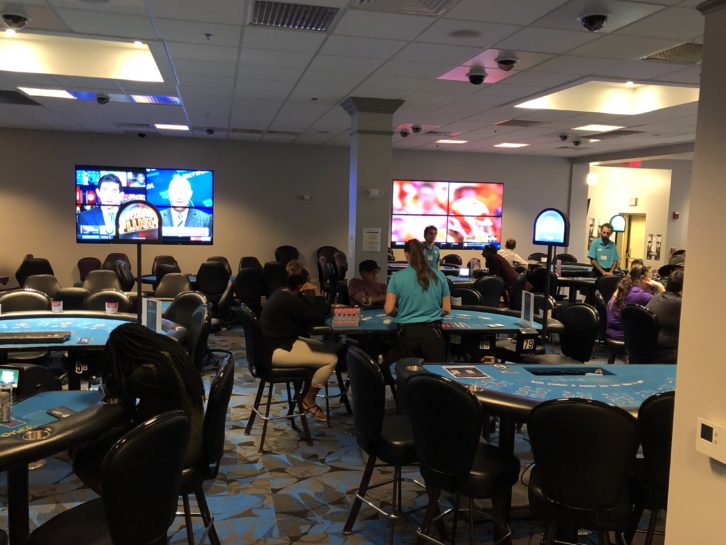
“In terms of AV, we’re looking for reliable systems that ‘play well together,’” Lucier notes. To that end, the Axis Satellite team recently designed and installed a URC Total Control automation system with a distributed audio and video network, Luxul networking gear, and a Just-Add-Power video matrix at the Casino Fort Pierce in Florida. The Casino Fort Pierce was one of the first installations using the new URC MRX-30 advanced system controller with quad-core processor. The MRX-30 was a good fit for the casino installation due to the long hours of operation and need for reliable performance. In a casino, downtime is not an option.
Want more stories like this delivered to your inbox every day? Then sign up for the free Residential Systems eNewsletter here.

